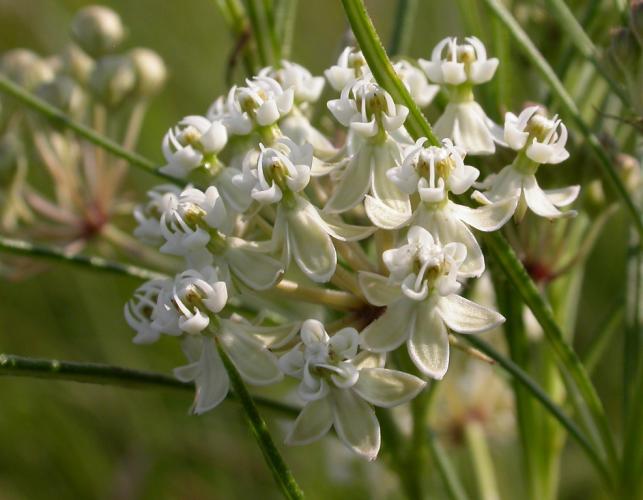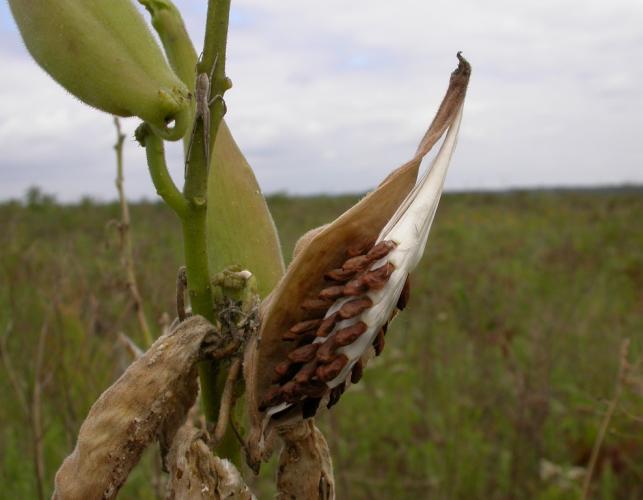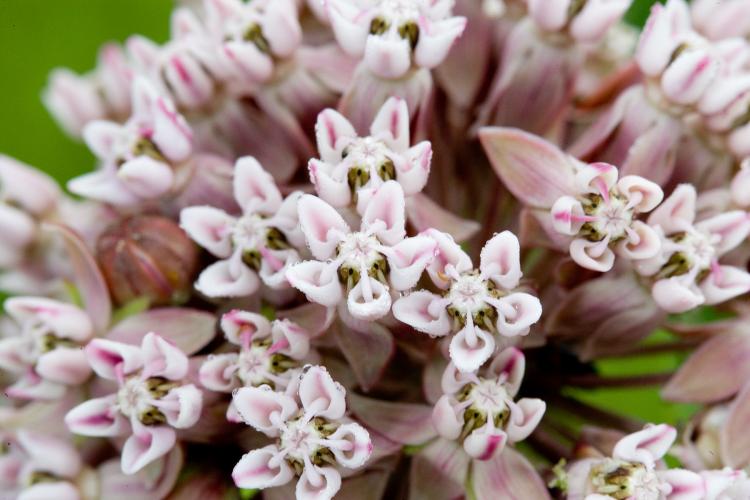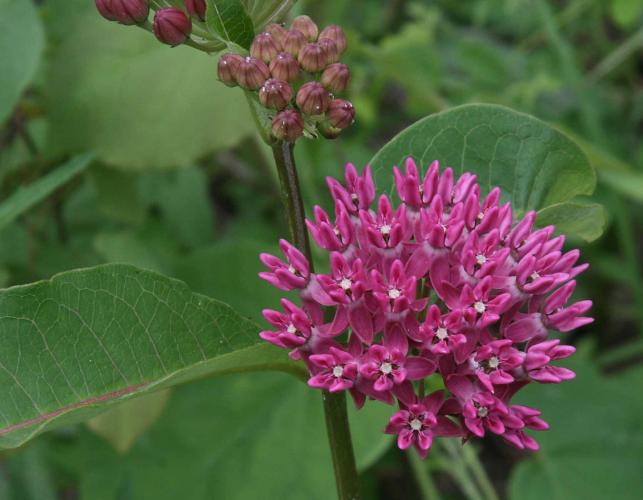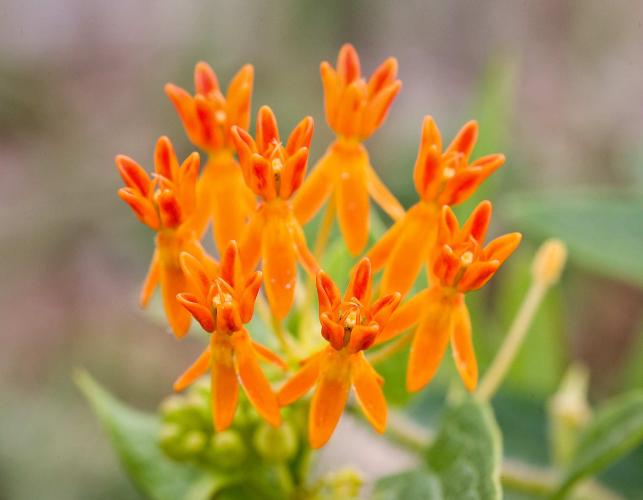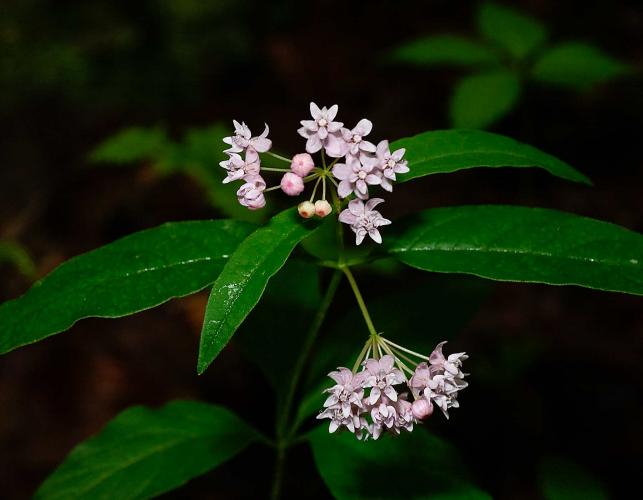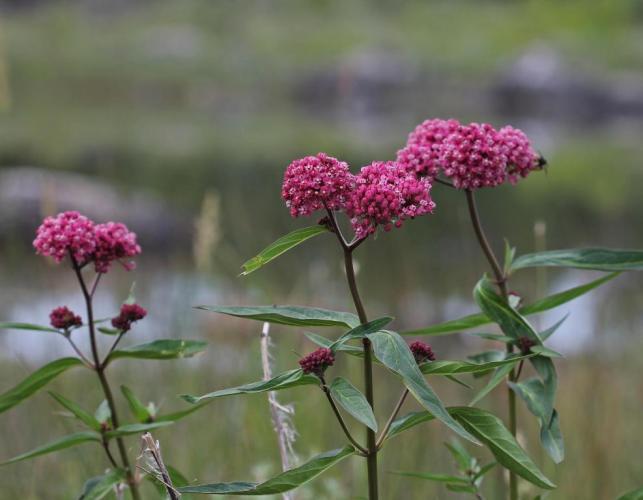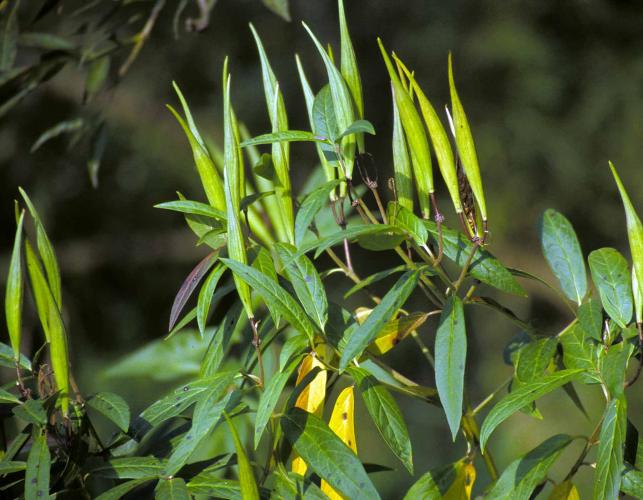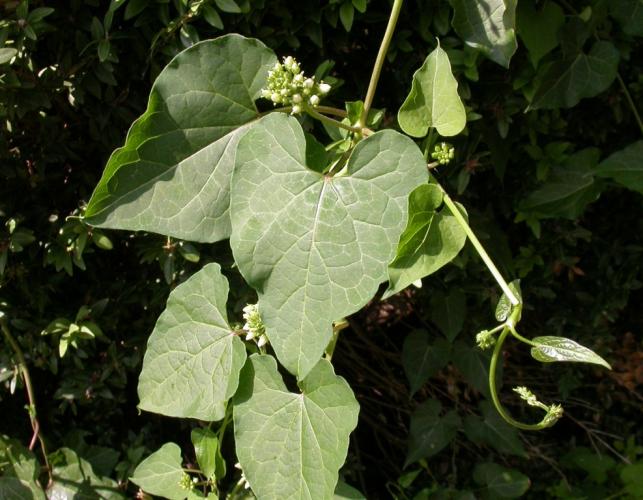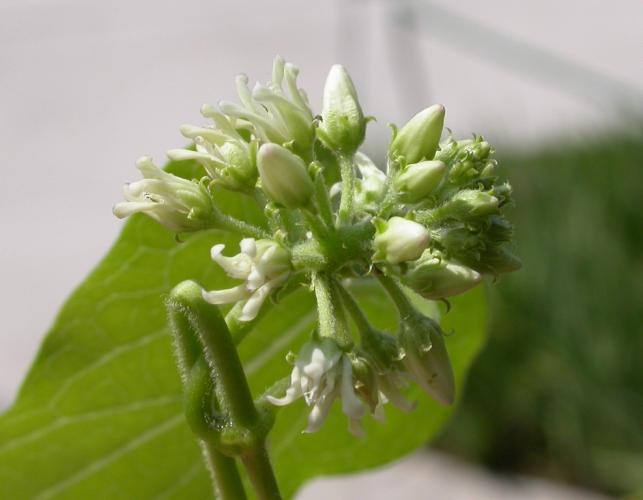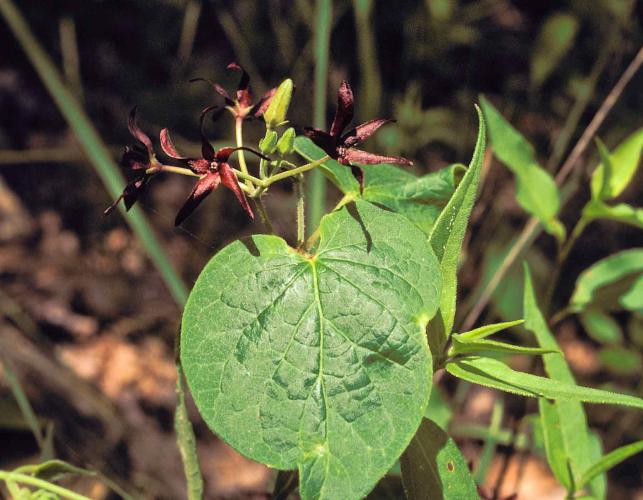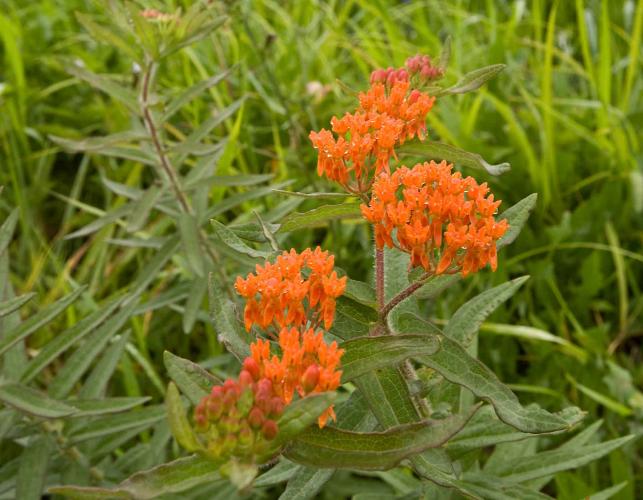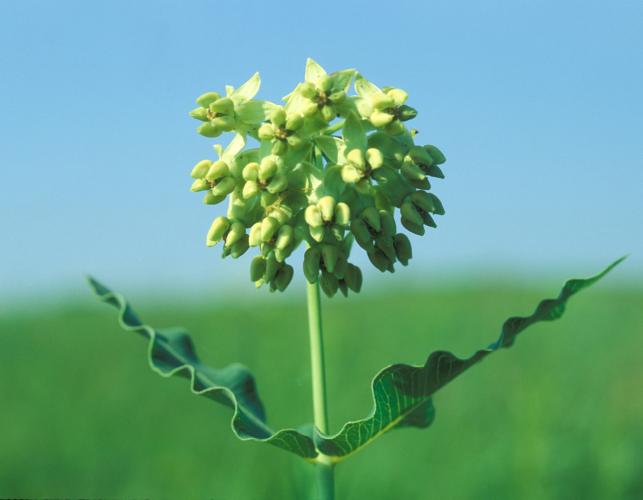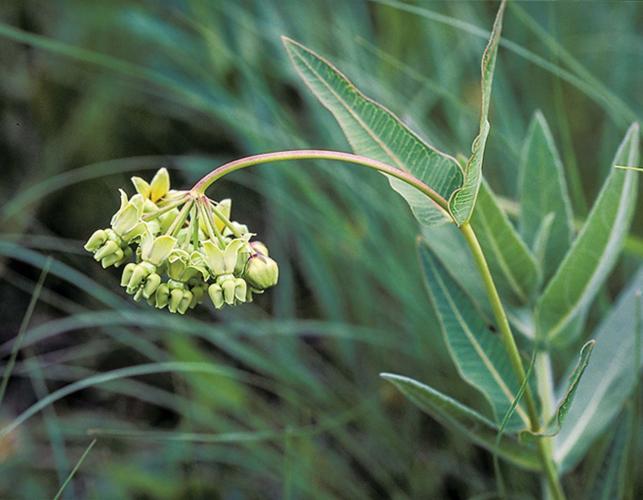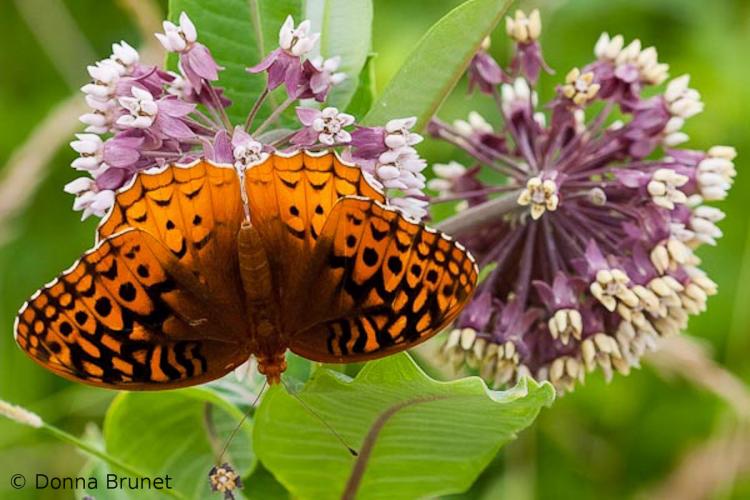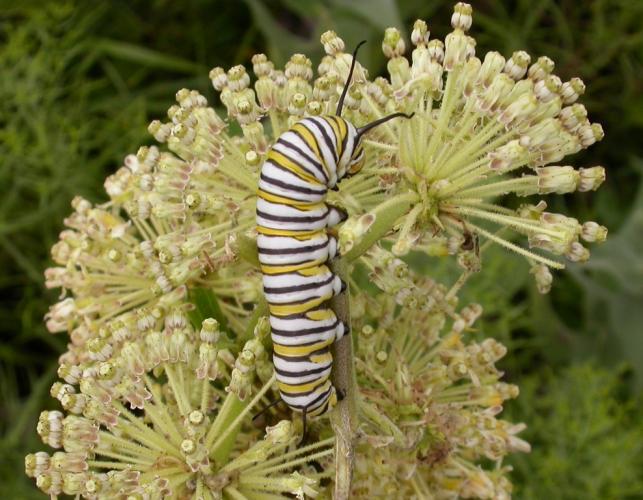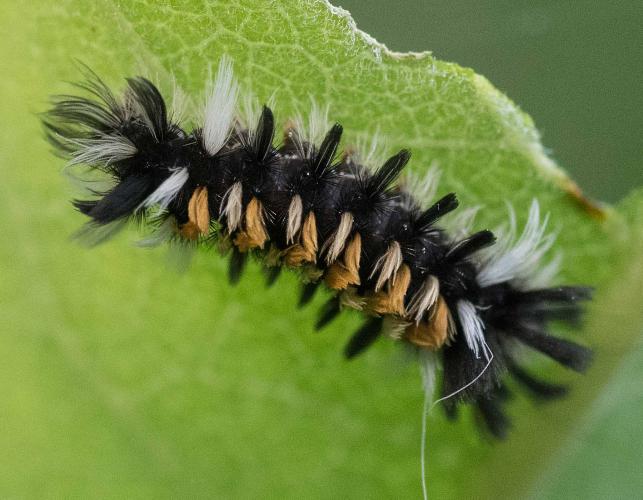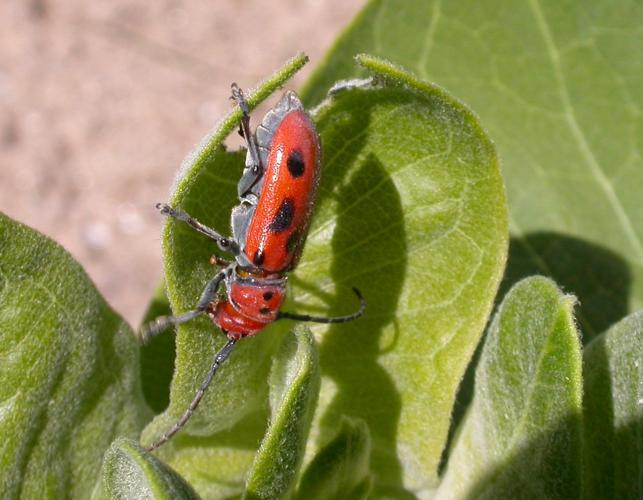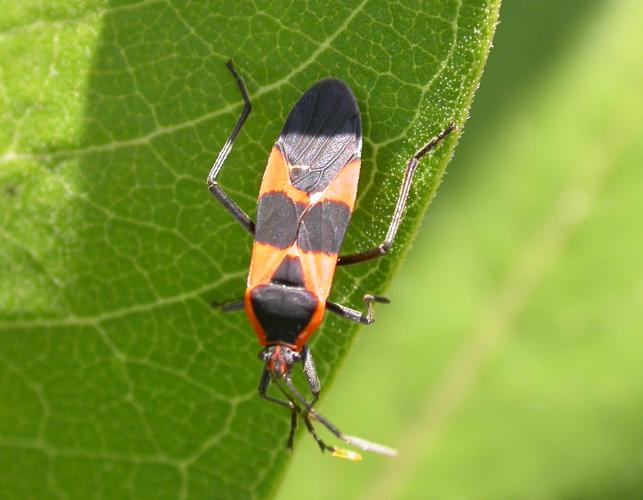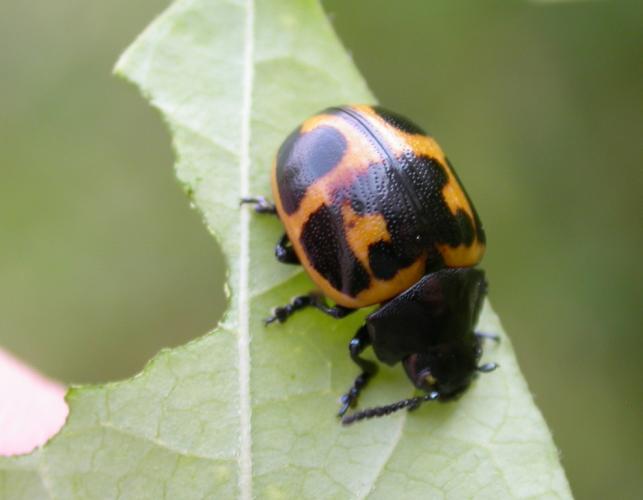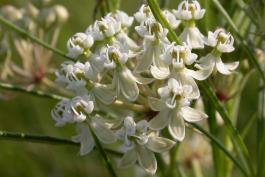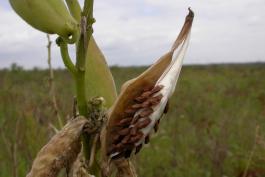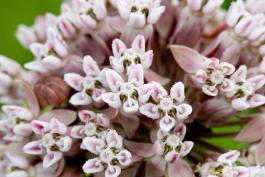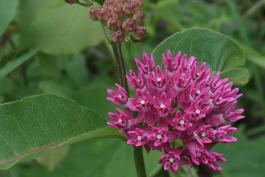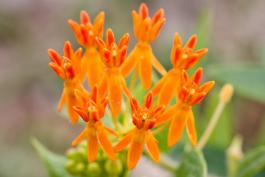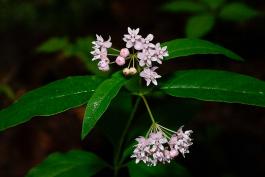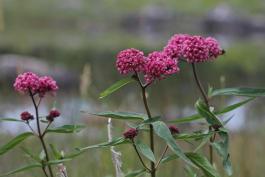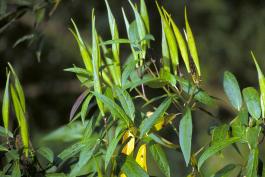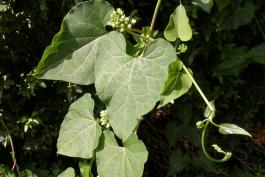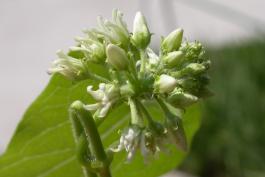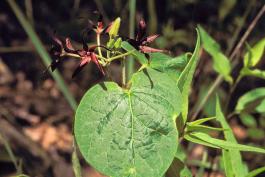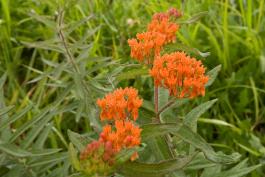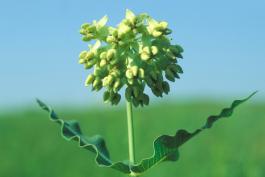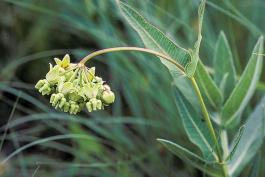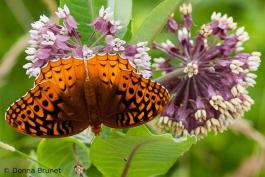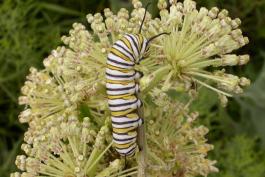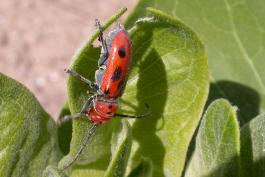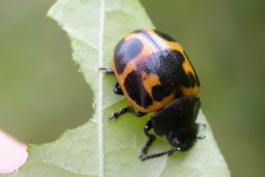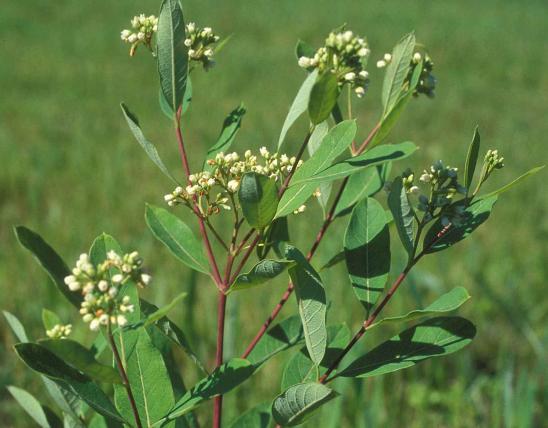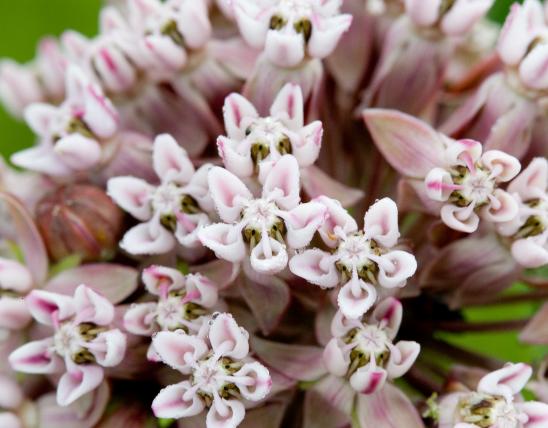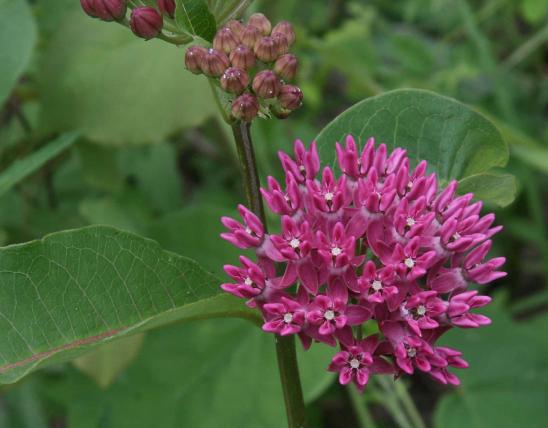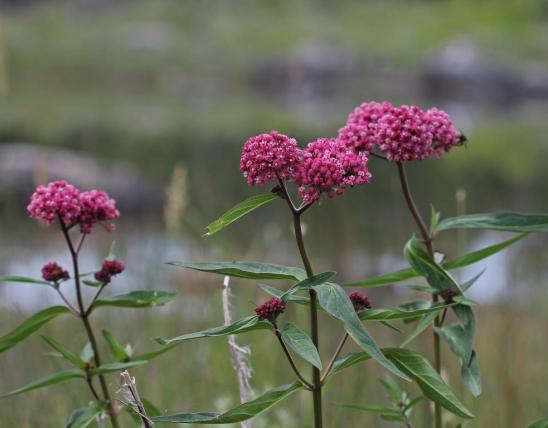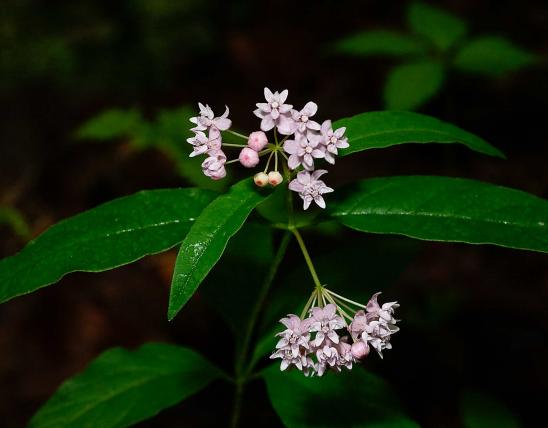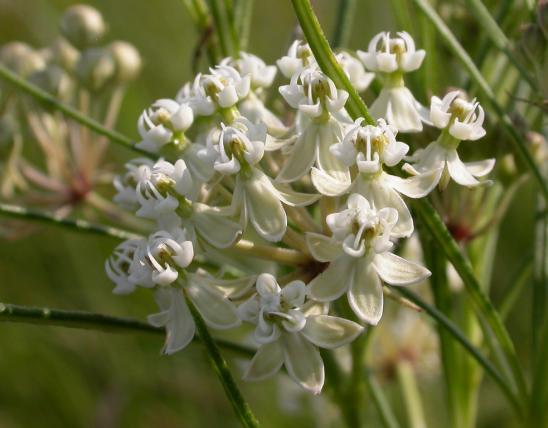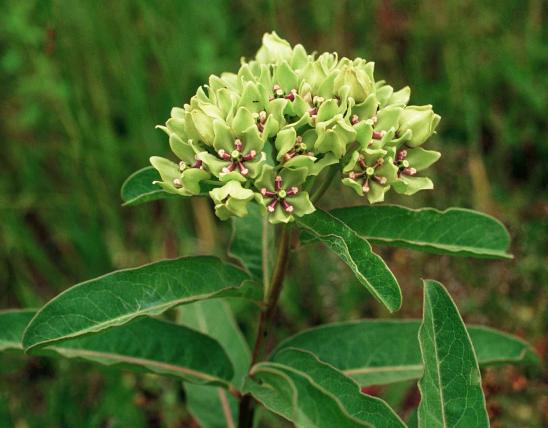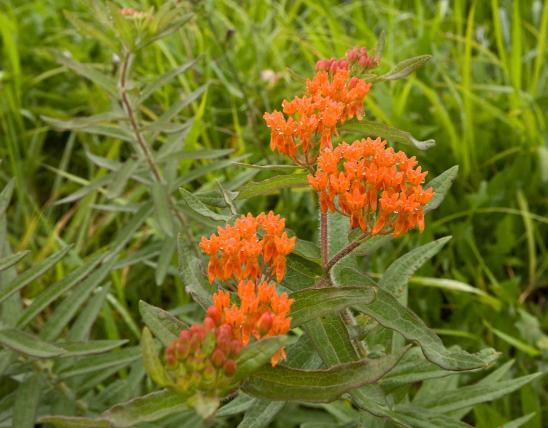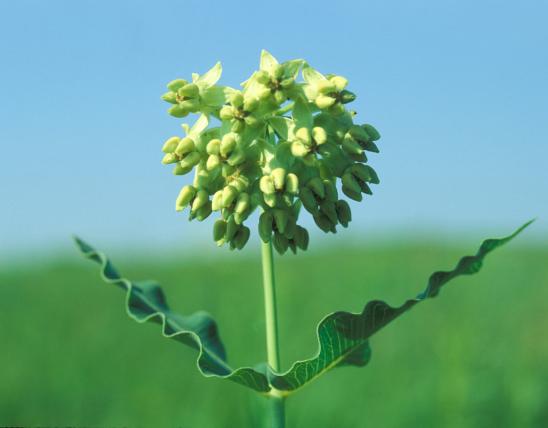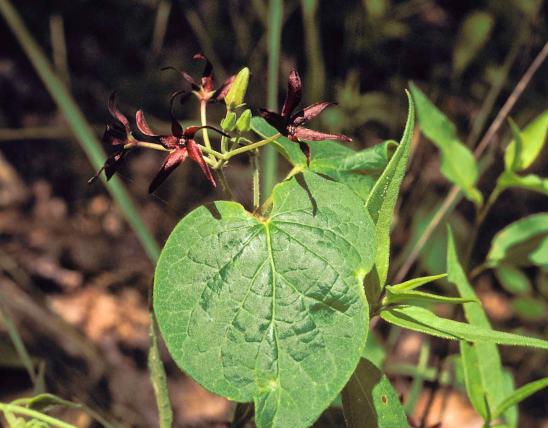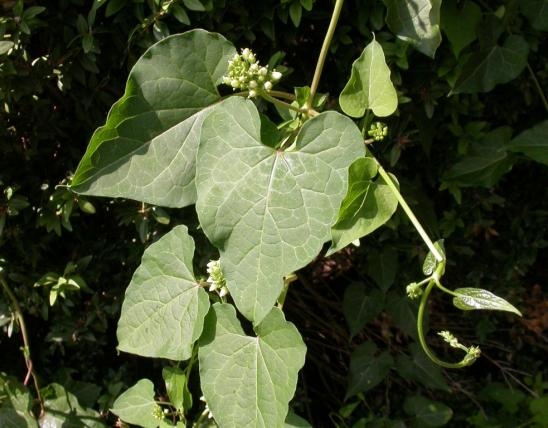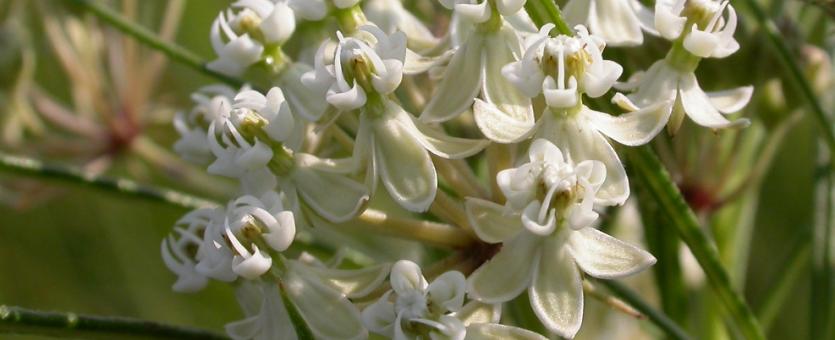
In Missouri, milkweeds are a subfamily of perennial herbs or twining vines. This page introduces them as a group. Most milkweeds have white latex (milky sap), but some have clear sap. The leaves are simple, most commonly opposite; the blades are variously shaped but are often somewhat wavy.
There are 22 species in 4 genera of milkweeds in Missouri:
- Asclepias (milkweeds; 17 species),
- Cynanchum (2 species; sand vine is the most common),
- Gonolobus (angle-pod; 1 species), and
- Matelea (climbing milkweeds; 2 species).
Milkweed flowers are unique. They have five parts and grow in rounded clusters (umbels). See Life Cycle for more details about their remarkable floral form, and how it influences pollination.
The fruits are podlike, sometimes growing in pairs. Each fruit contains numerous seeds, which are usually flattened and have a tuft of long, silky hairs at the tip.
Varies with species. Some are stout plants on single, unbranching stems to 3 feet high or higher; some are vines with long twining stems.
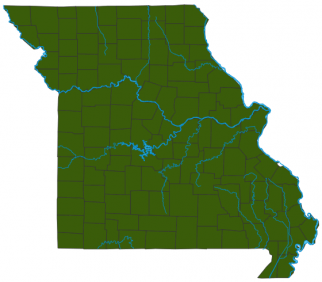
Statewide. Different species have different habitat preferences and different distributions within the state.
Habitat and Conservation
Many of Missouri’s milkweeds readily grow in open, disturbed soils, such as roadsides, pastures, and agricultural areas. Thus many people consider them weeds. Other milkweeds are associated with high-quality native habitats such as prairies.
The increasing use of herbicides has drastically reduced agricultural and roadside weeds, including milkweeds. This is a problem for the monarch butterfly, which requires milkweeds as larval host plants. Monarch numbers have been plummeting in large part due to the dramatic reduction of milkweeds. In response, many people are cultivating milkweeds to help the monarchs survive.
Status
Taxonomy: For a very long time, milkweeds were thought to belong in their own family, the Asclepiadaceae. That group has now been rolled into the dogbane family (Apocynaceae). Botanists have long known the two families were closely related. In about 2000, they announced that DNA evidence showed they were so close genetically that putting them in separate families was not warranted. But the milkweed group, with its distinctive floral structures, is still considered a unique subfamily or tribe within the dogbane family.
Life Cycle
A milkweed plant has many flowers, but relatively few fruits develop. Their unique flower structures and unusual pollination system prevent the flowers from self-fertilizing.
Looking closely at an individual milkweed flower, you will see:
- Whorls of 5 sepal lobes and 5 petal lobes that both seem to be positioned below the “flower,” and they commonly spread away from the rest of the flower.
- Above the sepals and petals is a 5-parted corona of petal-like hoods and pronglike horns.
- At the center of the flower is a knobby or columnlike structure called a gynostegium, which is 5-lobed. The gynostegium is a fusion of the anthers and stigmas.
Slits in the sides of the gynostegium allow pollen to go out and in. The pollen is contained in pairs of tiny sacs called pollinia; these entire sacs, linked together in pairs, are transported from flower to flower by insect pollinators such as bees.
To be pollinated, a milkweed flower must be visited, first, by one insect pollinator, whose leg enters a slot in the flower’s gynostegium and inadvertently removes a pair of pollinia. Then it flies away with the pollinia stuck on its leg, perhaps to pollinate another milkweed. Meanwhile, the original milkweed flower waits for another insect to bring pollen sacs from another milkweed.
The haphazard circumstances required for pollination help explain why a milkweed plant may create many, many flowers in its flower clusters, yet still only produce a few pods.
Human Connections
Today, people are planting milkweeds to help monarch butterflies survive. If you wish to grow them, collect some seeds from the wild, or purchase young plants from a reputable native plant nursery.
The milky latex of milkweeds was once explored as a potential source of rubber.
The silky floss of the seedpods has been used for stuffing pillows and life preservers.
Like many other plants that contain toxic chemicals, milkweeds have a long list of historic folk medicinal uses.
Ecosystem Connections
Many bees, butterflies, and skippers drink nectar from the flowers, and crab spiders and other predators often hide in the clusters, hunting them.
Few mammals eat the leaves of milkweeds. Milkweeds taste bitter and contain toxic chemicals called cardiac glycosides.
The monarch butterfly and milkweed tussock moth (a type of tiger moth) use milkweeds as larval food plants, collecting the sap’s toxic cardiac glycosides in their bodies and becoming unpalatable to predators. Milkweed longhorn beetles, large and small milkweed bugs, milkweed leaf beetles, and milkweed aphids also feed on milkweeds. They, too, collect toxins in their bodies and gain protection from predators. All are brightly colored with red, orange, or yellow.
